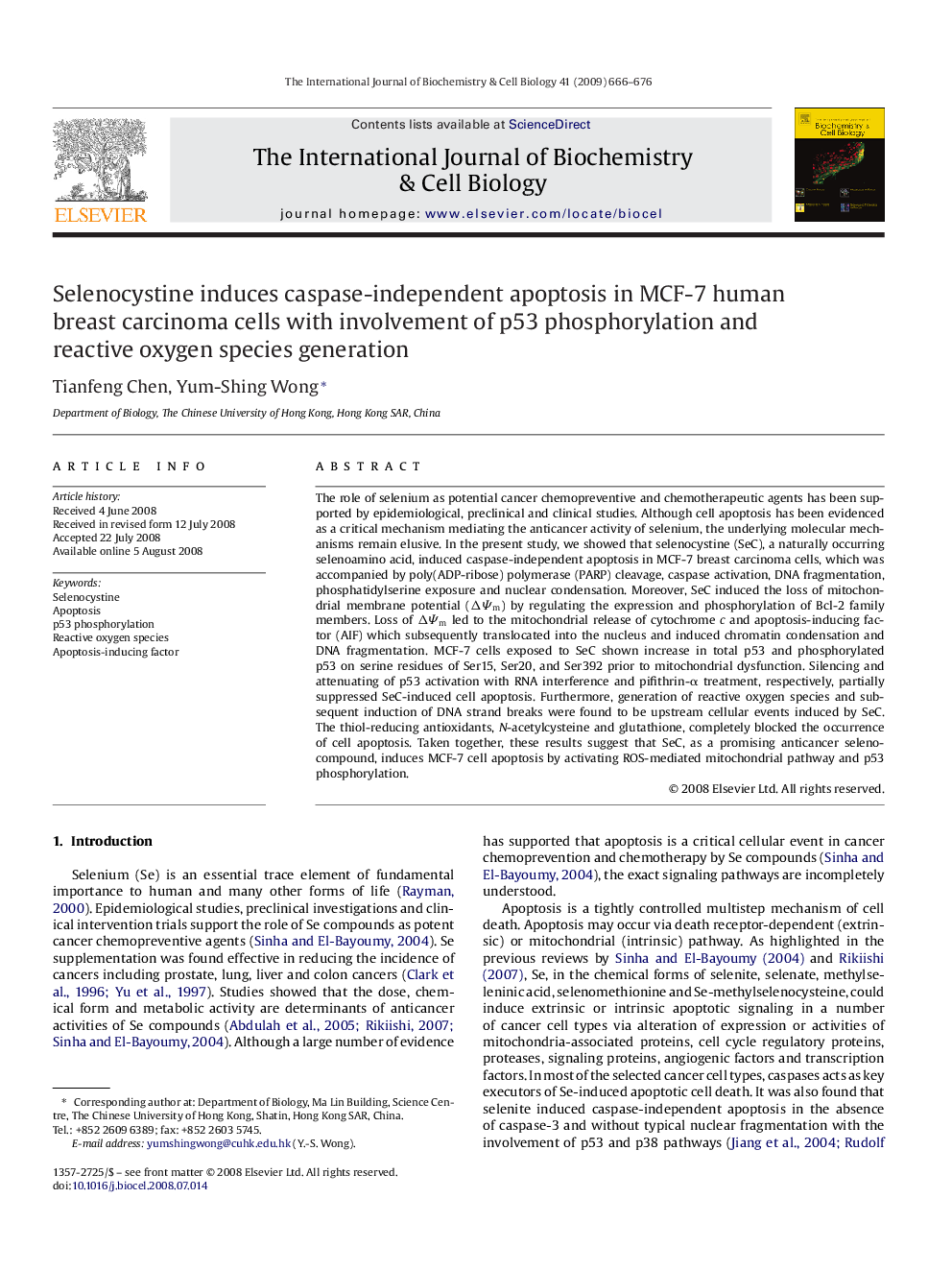| کد مقاله | کد نشریه | سال انتشار | مقاله انگلیسی | نسخه تمام متن |
|---|---|---|---|---|
| 8326236 | 1539955 | 2009 | 11 صفحه PDF | دانلود رایگان |
عنوان انگلیسی مقاله ISI
Selenocystine induces caspase-independent apoptosis in MCF-7 human breast carcinoma cells with involvement of p53 phosphorylation and reactive oxygen species generation
دانلود مقاله + سفارش ترجمه
دانلود مقاله ISI انگلیسی
رایگان برای ایرانیان
کلمات کلیدی
موضوعات مرتبط
علوم زیستی و بیوفناوری
بیوشیمی، ژنتیک و زیست شناسی مولکولی
زیست شیمی
پیش نمایش صفحه اول مقاله

چکیده انگلیسی
The role of selenium as potential cancer chemopreventive and chemotherapeutic agents has been supported by epidemiological, preclinical and clinical studies. Although cell apoptosis has been evidenced as a critical mechanism mediating the anticancer activity of selenium, the underlying molecular mechanisms remain elusive. In the present study, we showed that selenocystine (SeC), a naturally occurring selenoamino acid, induced caspase-independent apoptosis in MCF-7 breast carcinoma cells, which was accompanied by poly(ADP-ribose) polymerase (PARP) cleavage, caspase activation, DNA fragmentation, phosphatidylserine exposure and nuclear condensation. Moreover, SeC induced the loss of mitochondrial membrane potential (ÎΨm) by regulating the expression and phosphorylation of Bcl-2 family members. Loss of ÎΨm led to the mitochondrial release of cytochrome c and apoptosis-inducing factor (AIF) which subsequently translocated into the nucleus and induced chromatin condensation and DNA fragmentation. MCF-7 cells exposed to SeC shown increase in total p53 and phosphorylated p53 on serine residues of Ser15, Ser20, and Ser392 prior to mitochondrial dysfunction. Silencing and attenuating of p53 activation with RNA interference and pifithrin-α treatment, respectively, partially suppressed SeC-induced cell apoptosis. Furthermore, generation of reactive oxygen species and subsequent induction of DNA strand breaks were found to be upstream cellular events induced by SeC. The thiol-reducing antioxidants, N-acetylcysteine and glutathione, completely blocked the occurrence of cell apoptosis. Taken together, these results suggest that SeC, as a promising anticancer selenocompound, induces MCF-7 cell apoptosis by activating ROS-mediated mitochondrial pathway and p53 phosphorylation.
ناشر
Database: Elsevier - ScienceDirect (ساینس دایرکت)
Journal: The International Journal of Biochemistry & Cell Biology - Volume 41, Issue 3, March 2009, Pages 666-676
Journal: The International Journal of Biochemistry & Cell Biology - Volume 41, Issue 3, March 2009, Pages 666-676
نویسندگان
Tianfeng Chen, Yum-Shing Wong,